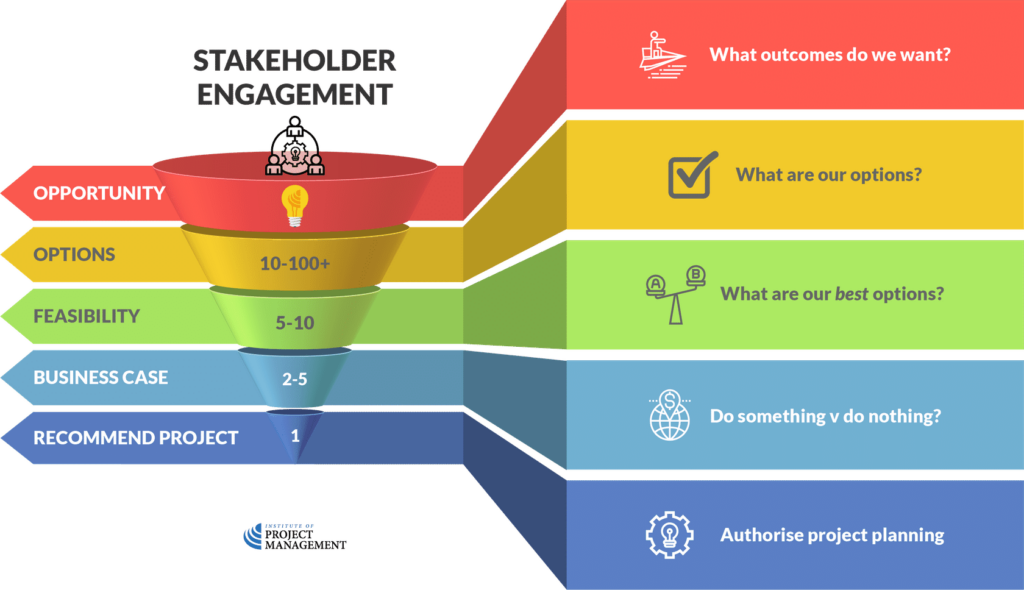Sources of change
As we have seen throughout this course, events occur at all points in the project lifecycle that will cause us to deviate from our original intention, or take a new, improved direction.
Changes might take advantage of an opportunity, respond to a threat, or remedy the influence of an external factor that has thrown us off course.
However, because projects are complex beasts, with a vast array of stakeholders and moving parts, these changes need to be systematically managed so that the project remains focused, coordinated, and understood by all.
Therefore, change should not just ‘happen’ in projects.
It should follow a formal process of request, consideration, approval, communication, and delivery to ensure that the change is in the holistic best interest of the project and its stakeholders, and that no one gets left behind.
And although any stakeholder can request a project change, managing the process is the project manager’s responsibility.
Typical sources of project change include:
- Late clarification of requirements
- A desire to enhance the deliverables
- Corrections to poor planning (eg inaccurate estimates, insufficient resources)
- Identified bugs or defects
- Emergent risk
- Changes to corporate strategy
- Regulatory change, or
- The emergence of new technologies
The change request
Although change requests may be initiated verbally, they should always be documented.
Essentially, every change request answers the following questions:
- What needs to be changed?
- Why does it need to be changed?
- What are the alternatives (including what will happen if we don’t make the change)?
- How will it impact time, cost, and scope (or even other projects)?
- When (and by when) should it happen?
- If approved, who will be responsible for it?
If that looks like a mini-business case, that’s because, in many respects, it is!
The processes that you follow in business case development – from stakeholder engagement and opportunity definition through to cost/benefit/risk and even multi-criteria analysis – can all be applied here.

In fact, when making significant changes to a project, you should always go back and check that the assumptions and expectations of the initial business case remain undisturbed.
The approval process
Every documented change request must be approved or rejected by some authority within the project management team or externally.
On many projects, the project manager is delegated a limited authority to approve certain change requests. In contrast, the sponsor may approve others, and the steering committee – or a dedicated Change Control Board (CCB) – will approve, reject or escalate the rest.
Note, too, that if the project is being delivered under a contract, then some proposed changes may need to be approved by the customer.
Approved change requests can require new or revised cost estimates, tasks to be added, schedule adjustments, resource requirements, and an analysis of risk.
Approved changes will, therefore, inevitably require updates to the project management plan, and it is important that someone is responsible for communicating these changes to all affected stakeholders.
On larger projects, all change requests, whether pending, approved, or declined, may also be kept in a change log.
A change log can readily index and sort changes by priority, status, activity, phases, or owner, among other fields.
Reviewing this log will form an essential part of the project review and continual improvement process.
It should be noted that the [changelog] file is the configuration record in software projects, something we will discuss in the next topic.
At the end of the day, changes to the project management plan are inevitable; rarely does a project manager finish a project with the same project plan they started with.
Uncontrolled changes, however, will create confusion, eroding commitment to the project.
For if changes are not managed properly, you will experience unacceptable schedule slips, significant cost overruns, and reduced product quality.
Effectively integrating a process of change control is thus essential to the successful delivery of any project.




